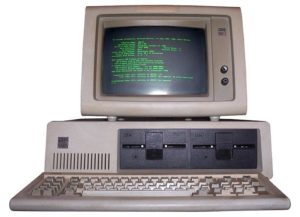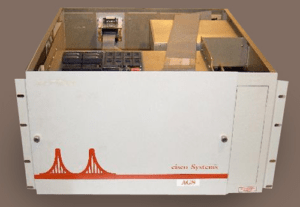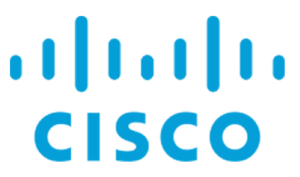Pivotal Moments in Computing History
There are probably many articles showing how the modern computer came to be but I thought it would be nice to look at some of its pivotal, but not necessarily known, moments. Without these, this article may well have been written on paper. So, the one I chose to start with is…
 No, not eight of Tray Tor or the cooler name, TR-8R from knowyourmeme.
No, not eight of Tray Tor or the cooler name, TR-8R from knowyourmeme.Yeah, it has a name like that and I totally did not make that up. The eight referred here are the scientists who worked at a pioneering semiconductor firm in the late 1950’s, Shocklet Semiconductor. They were, from left to right in the photo below, from Forbes, Gordon Moore, C. Sheldon Roberts, Eugene Kleiner, Robert Noyce, Victor Grinich, Julius Blank, Jean Hoerni and Jay Last.

The “F” symbol you see is where they landed after resigning: Fairchild Semiconductor. Their resignation from Shockley was a culmination of many mini rebellions against their founder, William Shockley’s petulant behaviour. Shockley wasn’t new to complains against him; he had himself resigned from Bell Labs after the same problem there led to his peers being promoted over him despite his natural brilliance.
And to be fair, he was a pioneer. Shockley was the first to predict that silicon would eventually replace germanium as the preferred material for semiconductors due its lower cost. Not only this, he also envisioned, perhaps not first but as one of the first, that instead of the three layers of the basic transistors of that era, a “diode” would have four layers, allowing them to generate “on” and “off” modes. This was perhaps the most revolutionary idea in the development of semiconductors since it heralded the use of logic gates that increased speed and efficiency exponentially.
But his bane was his brash behaviour, as is often seen with brilliant people, and eight of his best employees left and formed the basis of a new company with Sherman Fairchild called, unsurprisingly, Fairchild Semiconductor. With the space race heating up, the “Traitorous Eight” as Shockley called them, had made the right decision to leave Shockley but if you think Fairchild Semiconductor was the ultimate winner, remember that you probably don’t even know who they are now. The eight scientists eventually joined other companies or founded their own, and created innovations that make modern computing what it is today. You can hear more about it on Tim's podcast with E. S.
Robert Noyce and Gordon Moore founded NM Electronics and you may very, very well know them today by their much cooler name, Intel. Jerry Sanders, not part of the eight but of Fairchild Semiconductor had similar frustrations and founded AMD, Intel’s archrival. Moore is also the name behind the famous predictor of microchip performance and economics, “Moore’s Law”. Noyce predicted that the low cost of silicon diodes would mean people would just use and throw appliances instead of repairing them.
The series of moments of employees thinking they could do a better job than their management, resigning and starting their own companies starting from Shockley’s departure from Bell Labs, the “traitorous eight’s” from Shockley Semiconductor and finally their departure, along with others, from Fairchild Semiconductor set off a chain reaction of inspired movements and decisions. And these, in turn, created not tens but hundreds of companies and innovations throughout the 60’s, 70’s and beyond and enabled the personal computing industry, with Apple, IBM and Microsoft, to change the way we live and work.
Moral of the story: silicon diodes are the right answer and also, treat your employees right.
Part 2
You thought I would stop at one article for a topic like this? I’m going to plough on! For this post, I wanted to explore the launch of one of the most iconic computing device in the last fifty years: the Macintosh.
 Hello
HelloWhen Steven Paul Jobs announced the Macintosh to the world, it was considered to be not a breakthrough in computing per se. There were already computers built by the giant of that era, IBM. This was a breakthrough of emotion. For the first time, people could use computers without being completely flummoxed by them.
This was accomplished by Jobs after previous failures and the Macintosh team going through hell to meet Job’s idealistic targets in design and engineering. The previous model, the Apple Lisa, died a slow death as Jobs deliberately deviated resources away from it because he had been removed from the Lisa project and had wanted a faster, cheaper computer that was friendly and easy to use. In fact, it was the Lisa that first introduced the mass market GUI in a computer. The project and even the name wasn’t even his idea, it was Jef Raskin’s. But what Raskin had conceived, if he had stayed leader of the project, would most likely not have resulted in the metamorphosis the computer industry went through with the Macintosh.
So what was different about it? For those who were born well into the 80s and later (the “Millennials”), this photo looks like an ancient pile of e-waste. You’d be surprised to know that this is how its main competitor, the IBM PC 5150, looked like:
 Eek!
Eek!IBM machines, and for that matter, those of every other maker, were completely command line based and weren’t designed with aesthetics in mind, not ones that mattered to the customer anyway. Jobs wanted to change this, and for that, he went to the extent of imagining the screen of the Macintosh as a face and positioned the floppy drive (ancient squarish disk that stored data, for those who don’t know) such that it looked like a one-sided smile. Yes, go back up and look at it.
Jobs was so insistent upon the Macintosh setting a new precedent in the new GUI-enabled computing world he had envisioned, he even refused to add a numeric keypad! Yep, no numeric keypad. He did later agree to it but ended up not adding any arrow keys and function keys. The former, he felt, would encourage users to use the new mouse system of pointing and clicking, while the latter would force developers to design new functions for a new system. Imagine, launching a product with that audacity against the likes of then behemoths like IBM.
Another major change was that the Macintosh had very low storage. With only one drive in which to run the file system, applications and data, users had to connect external drives. It wasn’t that it did not have memory, it’s bitmapped user interface was so computationally intensive at the time, it kept running out of memory and storage! There was no internal fan to relieve the heat because Jobs did not like the whirring sound they made. After component failures due to overheating, they retrofitted a third party fan into the case. But all these aspects, which seem trivial and simplistic now, were huge product decisions in the 80s when computing was like rocket science. Every move Jobs made brought computers closer to what they are now.
Steve Jobs changed several industries and reinvented many products but if we were to look at his first revolution, it would be the Apple Macintosh that evolved into today's MacBook Pro.
Part 3
In this edition, I want to focus on that one device we see so less, it’s very easy to overlook its importance. I speak, of course, of the humble router.

So hot, it blew my lid off.
While the rest of the world was getting blown away by Steve Job’s takeover of the consumer PC market with their pathbreaking “1984” ad, another quiet revolution was underway on the West Coast.
Sandy Lerner and Len Bosack had jobs as researchers at Standord University where they also serviced department computers. At that time, you have to remember, computer science less mysterious than rocket science, microchips are still are widespread and most computers in use at that point were in institutions like universities and large companies.
At that point, there was a thriving community of computer scientists like Lerner who did great collaborative reseatch to invent what would later become routers (including William Yeager, who wrote the software). Now this was a grant by the government (DARPA, no less) as many project are and hence this was not really proprietary. When the findings were published, Lerner and Bosack wanted to go public with it, because why not? It wasn’t owned by anyone. To their disappointment, Stanford refused. They not only disallowed licensing of the technology but they also sale to other univerisities. This was strange since being a government grant, access could not be denied. Lerner and Bosack had jobs and were not looking to be entrepreneurs at the time so they did not even mind if Stanford received 100% of the payout. But it still did not work out.
Lerner and Bosack had no choice but to start their own company. The innovation had to go to market and they felt obligated to this cause. Stanford did file complaints accusing Cisco of stealing its technology but then agreed on a deal of royalties up till $3 million in sales and maintain its networks for a stipulated period of time. This was something Bosack and Lerner would have wanted earlier but Stanford was forced to do it only because Bosack and Lerner quit and they realized they had little support for their departments. Hmm, strange behavious from a school supposedly churning out smart people.
The path was finally clear and Bosack and Lerner could then focus on building their company. Interestingly their logo above and their revised one below has an interesting backstory

The name “cisco” was obviously derived from the city of San Francisco, but there are a few additional factoids in this bit of trivia: it was the 36th name they came up on! So yes, you’re not the only one who thinks all the good names are gone. The logo, which was the Golden Gate bridge in the original design, was chosen by Lerner because it was a gateway, like a router! That one blew my mind. Lerner and Bosack did not even understand what it might become.
It was difficult to fund the company but Lerner and Bosack made secured funding eventually from famed VC Don Valentine of Sequoia. This man had launched Apple and Intel. While the funding helped Cisco gain traction and attention, the aggressive all-business style of the managemen he brought in resulted in Lerner being fired unfairly, while Bosack resigned in solidarity. So ended the journey of the founders in the company.
Though they were compensated in the ouster, it was not much compared to what Cisco would become. But Lerner and Bosack actually devoted a lot of it to personal charity since that wasn’t what they were about from the beginning. While Bosack was a described as a reticent genius, it was Lerner who was the face of the company, she was one of the few women to head a department in those early years of computer science and who weathered a male dominated industry to help create an essential device that is omnipresent in the world today.